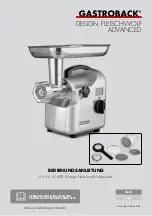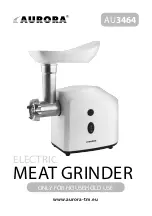
-18-
Model W1834 (For Machines Mfd. Since 7/14)
O
PE
R
ATIO
NS
Wheel.Inspection.&.Ring.
Test
Do not assume that a grinding wheel is in sound condition
just because it is new or looks okay. Often damage can
occur in shipping, with age, or with exposure to moisture,
and may not be visible. Inspect every wheel for damage
before installation.
First, do a visual inspection. Look for any cracks, chips,
nicks or dents in the surface of the wheel. If you see any
of these, DO NOT use the wheel.
Second, do a ring test. This test will give you an indication
of any internal damage that may not be obvious during a
visual inspection. If the wheel does not pass the ring test,
DO NOT use the wheel.
To.perform.a.ring.test,.do.these.steps:
1.
Make sure the wheel that you test is clean and dry—
otherwise, you may get false results.
2.
If size permits, balance wheel with your finger in
center hole. If this is not possible, hang wheel in air
with a piece of cord or string looped through center
hole.
3.
At the four spots on the wheel shown in
Figure.7.
gently tap wheel with a non-metallic object, such as
a screwdriver handle or wooden mallet.
4.
An undamaged wheel will emit a clear metallic ring
or “ping” sound in each of the four spots. A damaged
wheel will respond with a dull thud that has no clear
tone.
— If you determine from the results of the ring test
that wheel is damaged, DO NOT use it!
Figure.7.
Tapping locations for a ring test.
















































